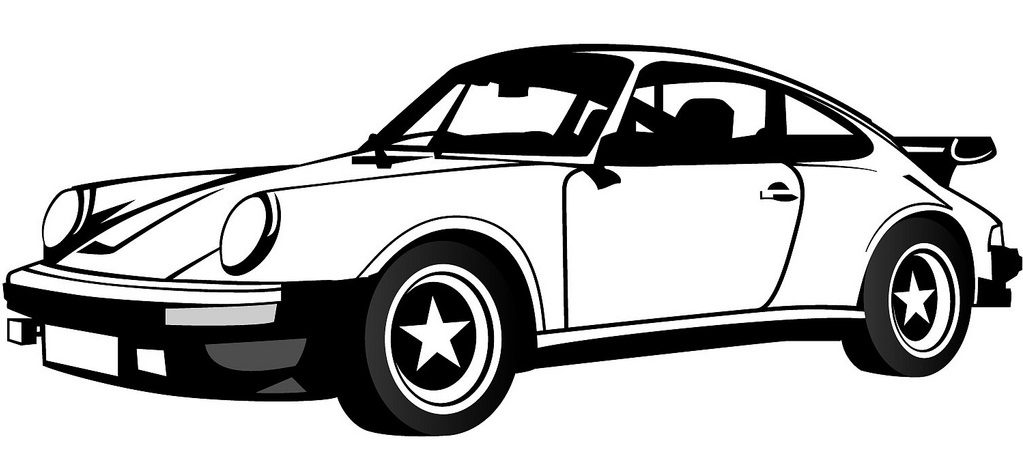A brief history of
Jeep
Introduction
The car manufacturer Jeep has made an important impact on the automotive world. In this article we will give a brief but detailed history of the Jeep marque.
We will look at the origins of Jeep looking at who, why, where and when Jeep was founded. We'll look at the design of the iconic Jeep logo and what are some the more significant Jeep models.
We'll take a glance at what racing history the Jeep has and who some of the most important people have been in the history of Jeep over the years.
Who, where, when and why was
Jeep founded?
Jeep is a well-known American automotive brand that specializes in manufacturing off-road vehicles. Let's delve into the details of who, when, where, and why Jeep was founded.
The history of Jeep dates back to the early 1940s during World War II. In 1941, the United States Army requested automobile manufacturers to develop a lightweight, all-terrain reconnaissance vehicle. This led to the creation of the first Jeep prototype, which was designed by American Bantam Car Company, Willys-Overland Motors, and Ford Motor Company. However, it was Willys-Overland who ultimately won the military contract and produced the iconic Willys MB Jeep.
The company was officially founded as Willys-Overland Motors on July 19, 1941, in Toledo, Ohio. It was during this time that the Jeep name began to gain recognition. The origin of the name "Jeep" is somewhat debated, with various theories suggesting that it derived from the abbreviation "GP" for "General Purpose" or from a popular character named "Eugene the Jeep" from the Popeye comic strip.
Jeep's role during World War II was instrumental, as its rugged and versatile vehicles played a crucial role in military operations. After the war, Willys-Overland decided to introduce a civilian version of the Jeep, capitalizing on its off-road capabilities and popularity. The first civilian Jeep, known as the CJ-2A (Civilian Jeep 2A), was introduced in 1945.
The Jeep brand changed ownership multiple times over the years. In 1953, Willys-Overland Motors was acquired by Kaiser Motors, and the company became known as Kaiser-Jeep Corporation. Later, in 1970, American Motors Corporation (AMC) acquired Kaiser-Jeep and took over the Jeep brand. Finally, in 1987, Chrysler Corporation (now known as Stellantis) purchased AMC, including the Jeep brand, and has been the owner ever since.
Jeep's success can be attributed to its commitment to producing rugged and capable vehicles that can handle various terrains and weather conditions. The brand's vehicles, such as the Wrangler, Cherokee, and Grand Cherokee, have become synonymous with adventure and off-road capability.
Today, Jeep continues to be headquartered in Toledo, Ohio, where its rich heritage began. The brand has expanded its lineup to include a range of SUVs, crossovers, and pickup trucks, catering to different customer preferences and needs. Jeep vehicles are not only renowned for their off-road capabilities but also for their modern designs, advanced technologies, and luxurious features.
As a brand, Jeep embodies the spirit of freedom, adventure, and exploration. Its vehicles are sought after by outdoor enthusiasts, off-road enthusiasts, and those who simply appreciate a rugged and capable vehicle. Jeep's enduring legacy and its commitment to producing high-quality vehicles have made it a well-respected and iconic name in the automotive industry.
How did the
Jeep logo originate?

How did the Jeep logo originate?
The Jeep logo, with its distinctive design, has become synonymous with adventure and off-road capability. Let's explore the history of the iconic Jeep logo.
The earliest version of the Jeep logo featured the word "Willys" in bold, capitalized letters. This logo appeared on the grille of the Willys MB Jeep during World War II. It showcased the brand name and created a sense of pride and identity for the vehicle. The simple yet powerful design of the logo represented the ruggedness and reliability of the Jeep.
Over the years, as Jeep transitioned into a civilian brand, the logo underwent several transformations. In the 1950s, the logo evolved to feature the word "Jeep" in stylized script, often accompanied by a star emblem. This design conveyed a sense of sophistication and modernity, reflecting the brand's expansion into the consumer market.
In the 1970s, after American Motors Corporation (AMC) acquired Jeep, the logo went through another update. The new logo featured the word "Jeep" in bold capital letters, often placed within a rectangular frame. This design change aimed to establish a more contemporary and corporate image for the brand.
With the acquisition of Jeep by Chrysler Corporation (now Stellantis) in 1987, the logo received further refinements. The current Jeep logo features the word "Jeep" in a bold, uppercase font enclosed within an oval shape. The oval represents unity, strength, and continuity. The minimalist design of the logo reflects the brand's commitment to simplicity, durability, and timeless style.
The Jeep logo has evolved over time to reflect the brand's growth and changing market dynamics. However, it has consistently maintained the essence of the Jeep's rugged and adventurous spirit. The logo serves as a visual symbol of the brand's heritage and commitment to producing capable and versatile vehicles that can conquer any terrain.
What are some of the significant
Jeep models?
Jeep, known for its ruggedness and off-road capability, has produced several iconic models throughout its history. Let's explore some of the most significant Jeep models, with a focus on the higher-performance vehicles.
In the 1940s, Jeep introduced the Willys MB, which became the backbone of the U.S. military during World War II. This legendary model laid the foundation for the Jeep brand and showcased its off-road prowess. With its exceptional off-road capabilities and durability, the Willys MB set the standard for future Jeep models.
In the 1960s, Jeep launched the Jeep Wagoneer, a full-size SUV that became the precursor to the modern luxury SUV segment. The Wagoneer offered a blend of ruggedness and comfort, featuring advanced features such as independent front suspension, power steering, and automatic transmission. It became a symbol of adventure and versatility for families seeking both off-road capability and on-road comfort.
In the 1980s, Jeep introduced the Jeep Cherokee XJ, which revolutionized the SUV market. The Cherokee XJ was the first compact SUV with a unibody construction, offering a more comfortable and car-like driving experience while retaining Jeep's legendary off-road capability. It quickly became popular among consumers and set the stage for the modern SUV era.
In the 2000s, Jeep unveiled the Jeep Grand Cherokee SRT8, a high-performance SUV that combined luxury and power. Powered by a potent V8 engine, the Grand Cherokee SRT8 delivered exhilarating performance both on and off the road. It showcased Jeep's ability to create vehicles that offered top-notch performance without compromising on versatility.
In recent years, Jeep introduced the Jeep Wrangler Rubicon, a dedicated off-road machine. The Wrangler Rubicon is equipped with heavy-duty off-road features, such as locking differentials, disconnecting sway bars, and aggressive off-road tires. It has become a favorite among off-road enthusiasts, offering the ultimate in capability and adventure.
These are just a few examples of the significant models in Jeep's history, highlighting the brand's commitment to producing vehicles that excel in both performance and ruggedness. Whether it's the iconic Willys MB or the modern-day Wrangler Rubicon, Jeep continues to push the boundaries of off-road capability and remains a symbol of adventure and exploration.

One of Jeep's Most Iconic Models
Who are some of the most important people in
Jeep's History
Behind the success of Jeep, there have been numerous individuals who have played significant roles in shaping the brand and its iconic vehicles. Let's explore some of the notable people associated with Jeep.
One of the key figures in Jeep's history is Willys-Overland, the company responsible for the production of the original Willys MB. Led by John North Willys, the company's founder, Willys-Overland played a vital role in developing the military Jeep that became legendary during World War II. Willys' vision and determination laid the foundation for Jeep's success and established the brand as a symbol of ruggedness and reliability.
Another notable figure in Jeep's history is Roy D. Chapin Sr., who served as the president of Willys-Overland during the early years of Jeep production. Chapin was instrumental in the mass production of the Willys MB and the subsequent development of civilian Jeep models. His leadership and business acumen were critical in expanding the Jeep brand beyond military applications and into the consumer market.
Jeep's success story continued under the ownership of the American Motors Corporation (AMC) in the 1970s. One influential individual during this time was François Castaing, an engineer and executive at AMC. Castaing played a key role in developing the Jeep Cherokee XJ, which revolutionized the SUV market with its unibody construction and paved the way for modern SUVs. His engineering expertise and innovative approach helped shape the direction of Jeep's product development.
In the modern era, Sergio Marchionne, the former CEO of Fiat Chrysler Automobiles (FCA), played a pivotal role in the growth and success of Jeep. Under Marchionne's leadership, FCA recognized the potential of the Jeep brand and invested in expanding its global presence. His strategic decisions, including the introduction of new models and increased production capacity, propelled Jeep to new heights and made it one of the most recognizable and profitable automotive brands in the world.
These are just a few examples of the individuals who have made significant contributions to the success of Jeep. From the vision of John North Willys to the engineering prowess of François Castaing and the strategic leadership of Sergio Marchionne, these individuals have left a lasting impact on Jeep's legacy and have shaped the brand into what it is today.

One of the most influential people in the history of Jeep
Jeep's Racing History
While Jeep is primarily known for its off-road capabilities and rugged vehicles, it also has a rich history in racing. Over the years, Jeep has participated in various forms of motorsport, showcasing the performance and durability of its vehicles on the race track.
One notable area where Jeep has made its mark in racing is in off-road competitions, such as the famous Baja 1000. The Baja 1000 is an annual off-road race held in the Baja California Peninsula in Mexico, known for its treacherous terrain and challenging conditions. Jeep vehicles, particularly the Jeep Wrangler, have been a popular choice among off-road racing enthusiasts due to their robustness and off-road capabilities. Jeep teams have successfully competed in the Baja 1000, demonstrating the endurance and toughness of their vehicles in these demanding races.
In addition to off-road racing, Jeep has also ventured into other forms of motorsport, including rally racing. Jeep participated in events like the European Rally Championship (ERC), where the Jeep Grand Cherokee SRT has been used as a rally car. The Grand Cherokee SRT, with its powerful V8 engine and advanced four-wheel-drive system, provided a solid platform for rally racing, showcasing the performance and agility of Jeep vehicles in a competitive setting.
Furthermore, Jeep has also been involved in the popular sport of hill climbing. Hill climb races are high-intensity events that test the power and traction of vehicles as they navigate steep slopes and challenging terrain. Jeep models like the Jeep Grand Cherokee Trackhawk, equipped with powerful engines and advanced all-wheel-drive systems, have participated in hill climb races, showcasing their impressive acceleration and handling capabilities.
Jeep's participation in racing events not only highlights the performance and capabilities of its vehicles but also serves as a platform to test and develop new technologies and features. The challenging conditions and intense competition push Jeep engineers to continually improve the performance, durability, and reliability of their vehicles.
Overall, Jeep's racing history is a testament to the brand's commitment to delivering vehicles that excel in both off-road adventures and competitive racing environments. From the Baja 1000 to rally racing and hill climb events, Jeep has proven its mettle on the race track, solidifying its reputation as a manufacturer that offers capable and high-performance vehicles for enthusiasts and professionals alike.
Summary
Jeep is a well-known car manufacturer renowned for its off-road capabilities and rugged vehicles. The brand has a rich history in producing iconic SUVs that have become synonymous with adventure and exploration. Jeep's vehicles are designed to tackle challenging terrains and provide excellent off-road performance, making them a top choice for outdoor enthusiasts and adventurers.
With a strong reputation for reliability and durability, Jeep has gained a loyal following around the world. The brand has continuously evolved its lineup to offer a range of models suited for various needs, from the iconic Jeep Wrangler, known for its open-top design and legendary off-road capabilities, to the versatile Jeep Grand Cherokee, offering a blend of luxury, comfort, and performance.
View Jeep Car Specifications
More Manufacturer Histories.

























